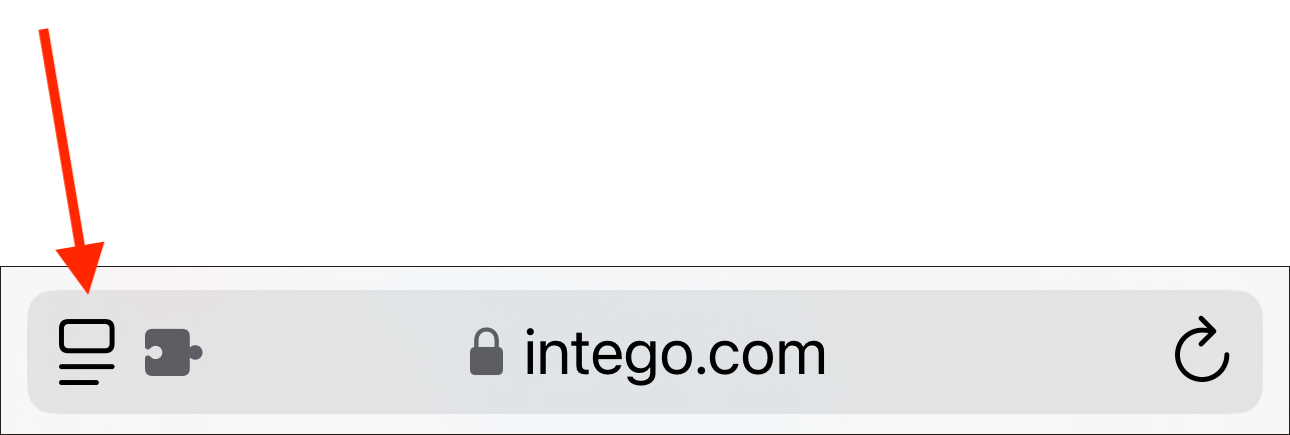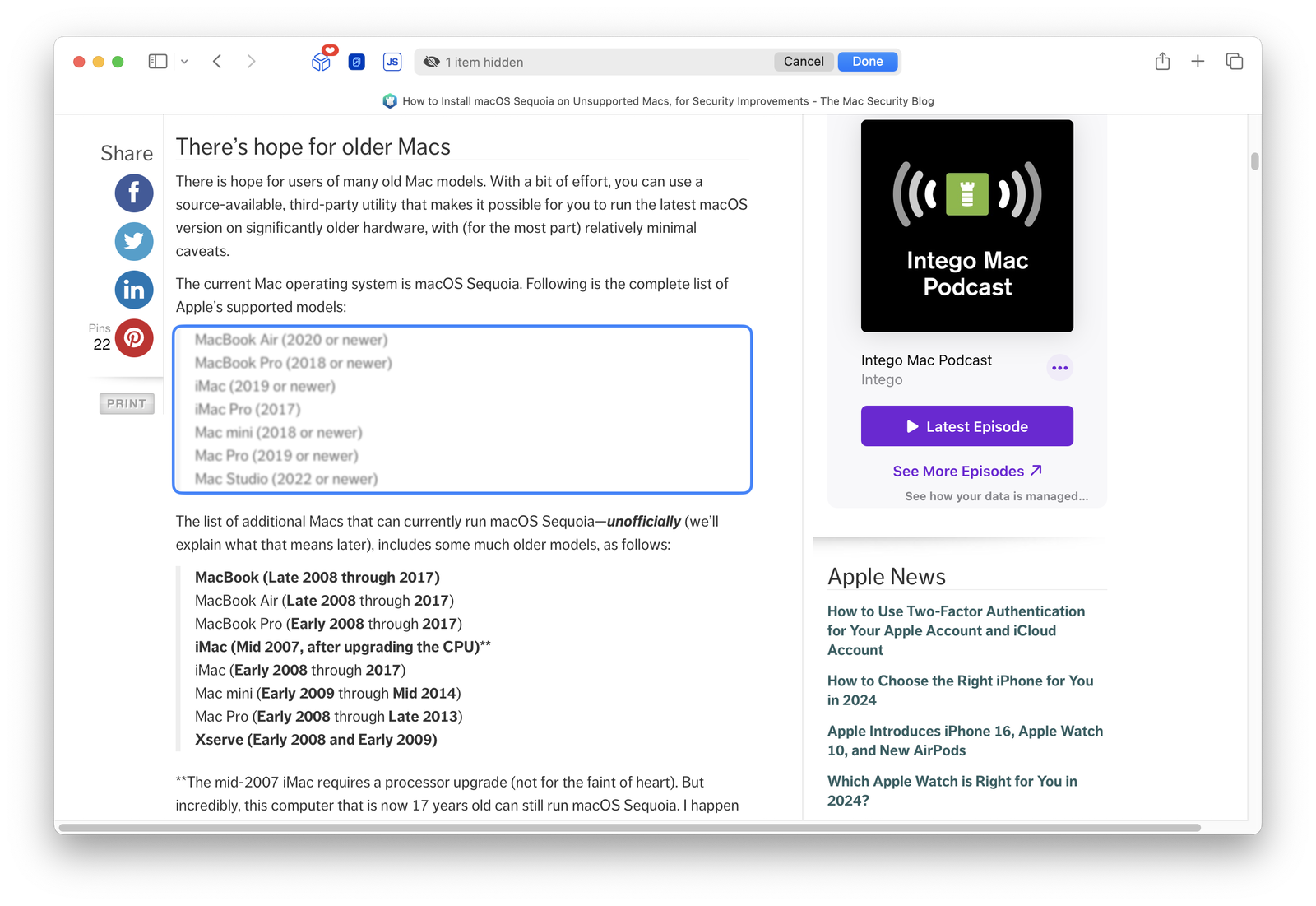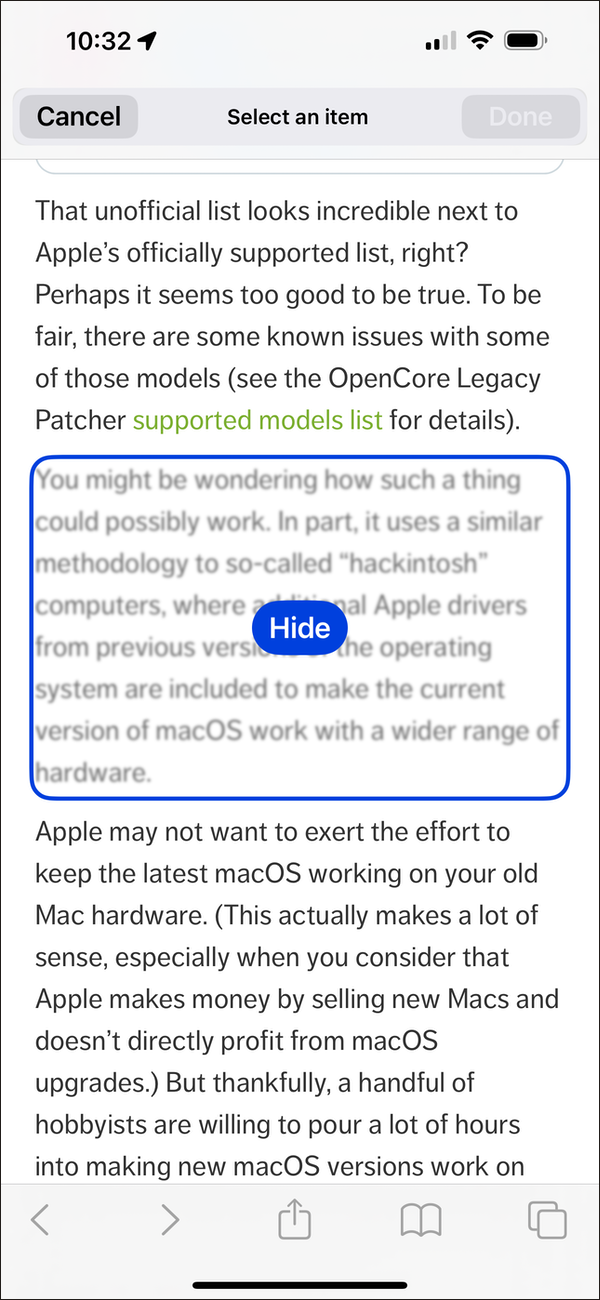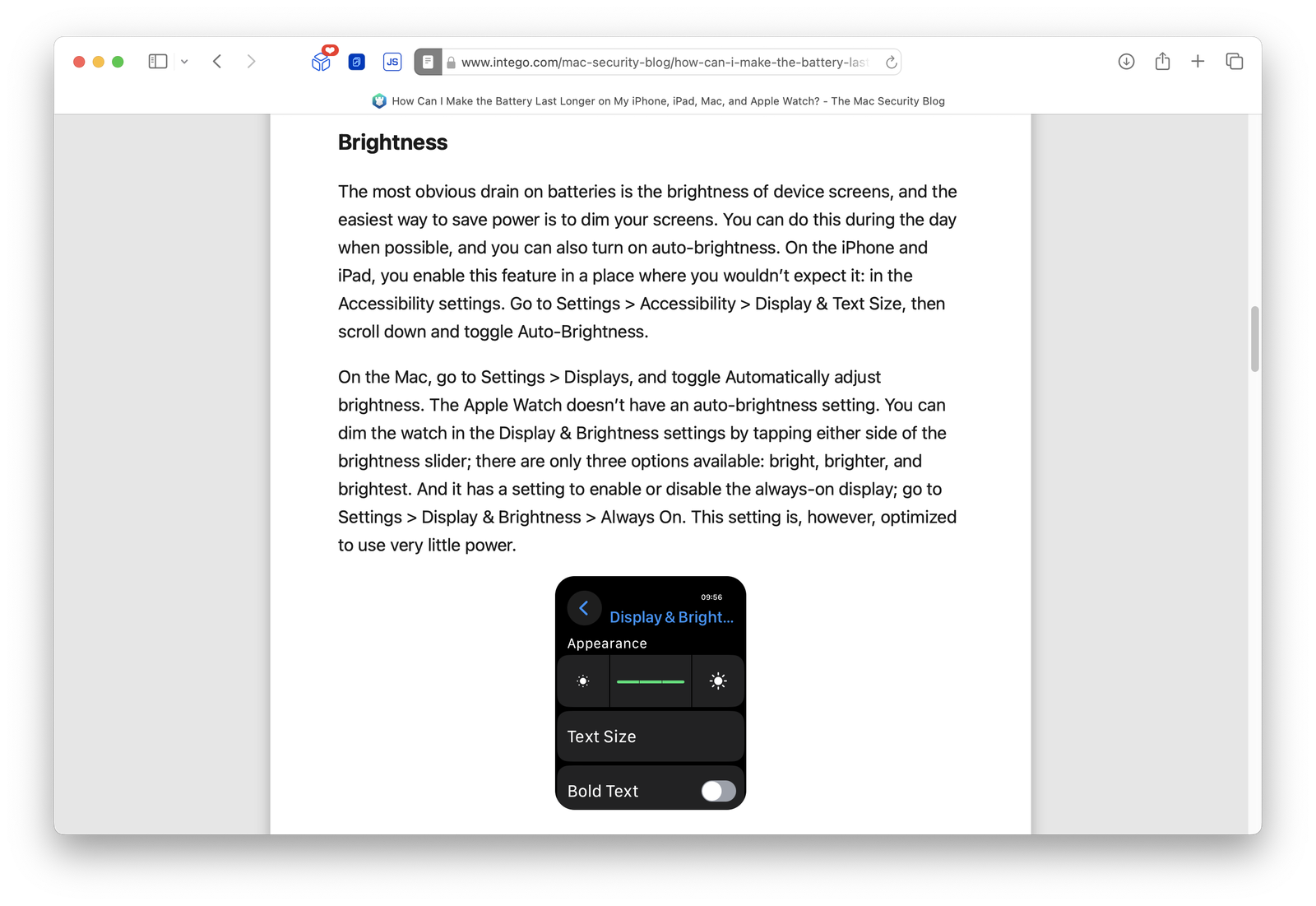How to use Distraction Control in Safari to remove unwanted web page elements
Posted on
by
Kirk McElhearn

The modern web can be annoying. Sometimes you just want to read an article, but you’re distracted by ads, popups, auto-play videos, animated gifs, and more. While you can use an ad blocker, some websites won’t display content if they detect this sort of software. And you may want to support websites by allowing them to display ads.
But some websites go too far. Apple’s new Hide Distracting Items feature in Safari can help you by removing elements that get in the way. Here’s how to use this feature.
How Safari hides distracting items
Elements on web pages are defined by HTML (hypertext markup language) and CSS (cascading style sheets). These two elements define what content is displayed and how. As such, web browsers know how to integrate multiple elements on a web page and display them correctly. But this also allows web browsers to identify these elements, such as paragraphs of texts, image blocks, navigation bars, and more.
Safari uses this to allow you to hide distracting items. You activate the feature by clicking or tapping the Page icon in Safari, which is at the left of the address bar.

Choose Hide Distracting Items from the Page menu, then move your Mac’s cursor over different items on a web page, and Safari highlights them. On a Mac, you can scroll a page and select an element with your cursor.

On an iPhone or iPad, you must scroll to where you want to hide an element, tap the Page menu and select Hide Distracting item, then tap the item to select it. You can see that tapping a paragraph selects that paragraph because Safari knows where the paragraph begins and ends.

On the Mac, as soon as you click an element, Safari hides it with an animation. On an iPhone or iPad, you tap an element, then tap Hide, and then see the animation.

Click or tap Done to save your changes. After this, you’ll see a blue crossed-out eye icon in the address bar, reminding you that some items are hidden.
If you want to restore the items you’ve hidden and see the original web page, click or tap the Page icon again and choose Show Hidden Items to restore these elements to the web page. If you want to hide additional elements, tap Hide Distracting Items to hide more elements on the page, then save your changes.
Limitations of Distraction Control
Apple’s Distraction Control is not an ad blocker; it is intended to help you view a single page on a website. If you hide an item on one web page, and then view the page later, that element should be hidden. But if you view another page on the same website, there’s no guarantee that the element will be hidden. In many cases, if you hide an item such as a navigation bar at the top of a website, that will be hidden when you visit other pages. Depending on the website, you may or may not find that items in certain locations are hidden on other pages. Ads and auto-play videos that display over web pages are often not blocked when you go to another page on a website.
If you use Distraction Control to dismiss cookie dialogs, the website might not work correctly, since it may need your approval to store cookies to be able to save your preferences or actions, such as if you add an item to a shopping cart on a site. Also, Distraction Control settings are device-specific, and don’t sync to your other Apple devices when you visit the same website.
You can consider this feature to be similar to Safari’s built-in Reader feature, which strips a page of extraneous elements and presents the text in a more readable form. You can access Reader from the same Page menu in the Safari address bar, and disable it from the same menu.

The main difference is that Reader reflows all the text in a font of your choice, so you don’t see the text of what you’re reading the way the website formatted it. This can, however, be much easier to read than some websites.
Try out Distraction Control in Safari when you get to a website that’s too cluttered. You’ll find that this feature makes it much easier to read websites that are overloaded with ads and other content that you don’t want to see.
How can I learn more?
 Each week on the Intego Mac Podcast, Intego’s Mac security experts discuss the latest Apple news, security and privacy stories, and offer practical advice on getting the most out of your Apple devices. Be sure to follow the podcast to make sure you don’t miss any episodes.
Each week on the Intego Mac Podcast, Intego’s Mac security experts discuss the latest Apple news, security and privacy stories, and offer practical advice on getting the most out of your Apple devices. Be sure to follow the podcast to make sure you don’t miss any episodes.
You can also subscribe to our e-mail newsletter and keep an eye here on The Mac Security Blog for the latest Apple security and privacy news. And don’t forget to follow Intego on your favorite social media channels: ![]()
![]()
![]()
![]()
![]()
![]()
![]()